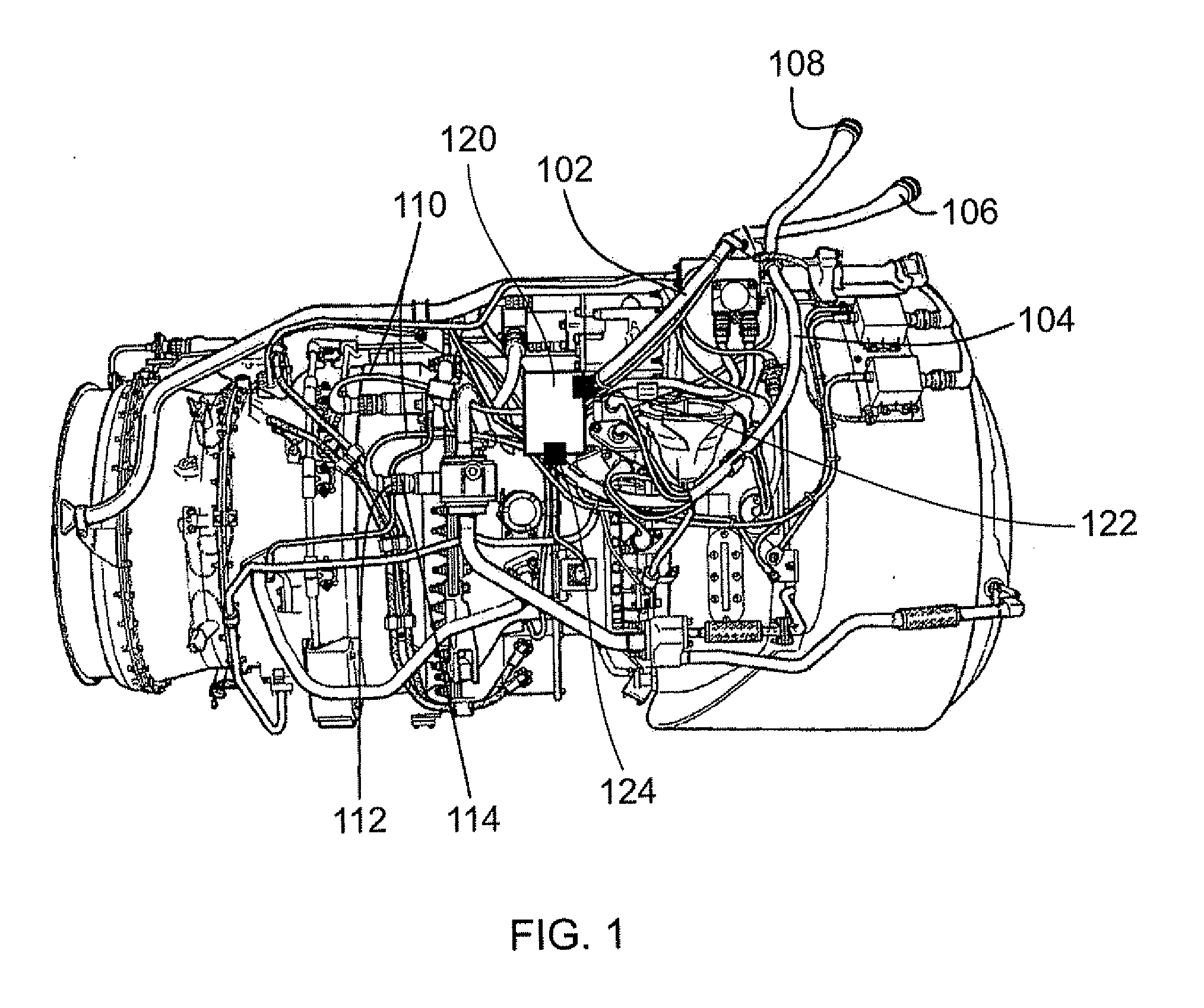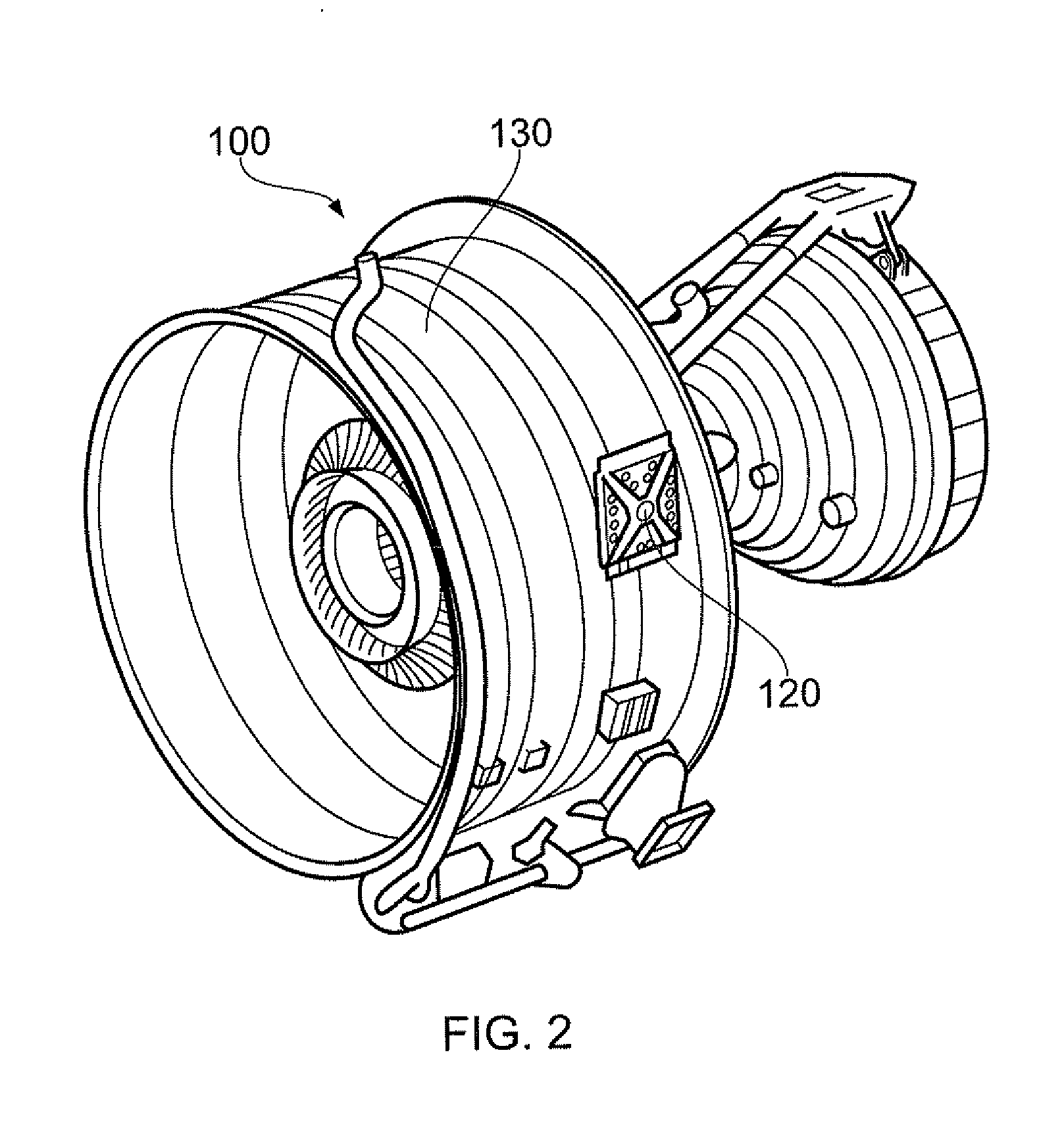Electronic unit mounting
a technology for electronic units and mounting brackets, applied in the field of electronic units, can solve the problems of increasing the weight and complexity of electrical harnesses, affecting the safety of the engine, so as to reduce the number of anti-vibration mounts that are required to assemble the engine, and prolong the life of the electrical raft. the effect of the electrical raft and the reduction of the total number of mounting brackets
- Summary
- Abstract
- Description
- Claims
- Application Information
AI Technical Summary
Benefits of technology
Problems solved by technology
Method used
Image
Examples
Embodiment Construction
[0070]With reference to FIG. 3, a ducted fan gas turbine engine (which may be referred to as a turbofan engine) generally indicated at 10 has a principal and rotational axis X-X. The engine 10 comprises, in axial flow series, an air intake 11, a propulsive fan 12, an intermediate pressure compressor 13, a high-pressure compressor 14, combustion equipment 15, a high-pressure turbine 16, and intermediate pressure turbine 17, a low-pressure turbine 18 and a core engine exhaust nozzle 19. The engine also has a bypass duct 22 and a bypass exhaust nozzle 23. The example turbofan engine 10 shown in FIG. 3 has a fan case 24 and a nacelle 30. The nacelle 30 at least partially surrounds the fan case 25. The nacelle 30 has an outer surface (or skin) 32.
[0071]The gas turbine engine 10 works in a conventional manner so that air entering the intake 11 is accelerated by the fan 12 to produce two air flows: a first air flow A into the intermediate pressure compressor 13 and a second air flow B whic...
PUM
| Property | Measurement | Unit |
|---|---|---|
| drag coefficient | aaaaa | aaaaa |
| electrical assembly | aaaaa | aaaaa |
| flexible | aaaaa | aaaaa |
Abstract
Description
Claims
Application Information
 Login to View More
Login to View More - R&D
- Intellectual Property
- Life Sciences
- Materials
- Tech Scout
- Unparalleled Data Quality
- Higher Quality Content
- 60% Fewer Hallucinations
Browse by: Latest US Patents, China's latest patents, Technical Efficacy Thesaurus, Application Domain, Technology Topic, Popular Technical Reports.
© 2025 PatSnap. All rights reserved.Legal|Privacy policy|Modern Slavery Act Transparency Statement|Sitemap|About US| Contact US: help@patsnap.com



